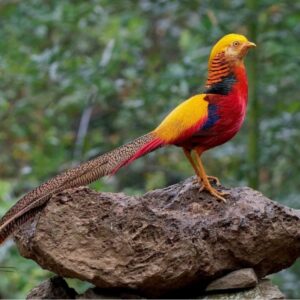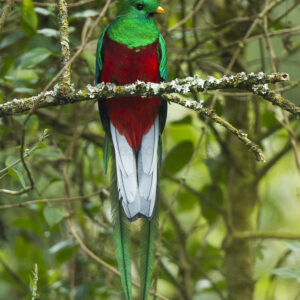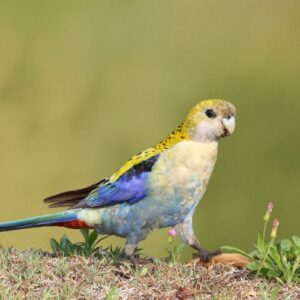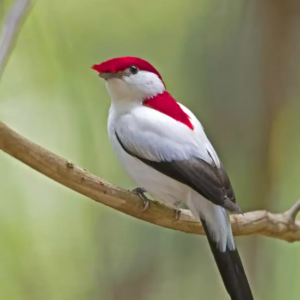Wearing bright blue eyeliner and equally blue carefully crafted stylized sideburns, make these large jays more than a little striking in his suit of pale yellow and black.
Meet the Plush Crested Jay
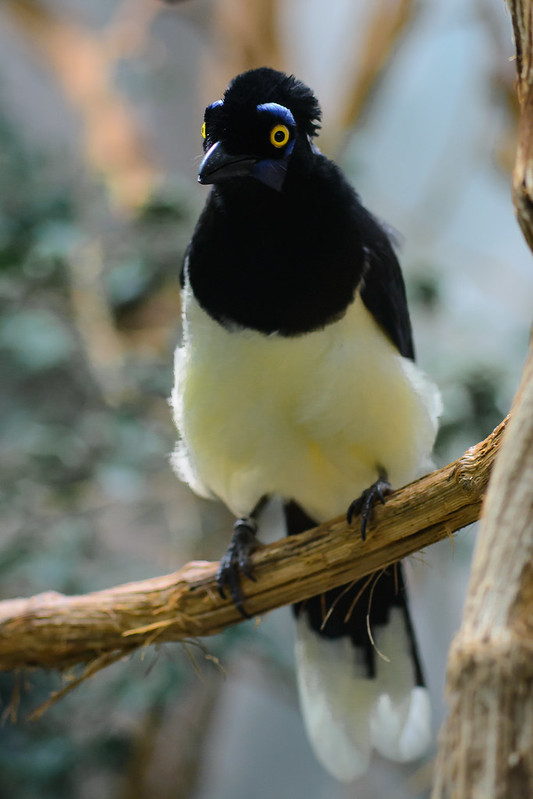 Photo Courtesy of kuhnmi / CC BY 2.0
Photo Courtesy of kuhnmi / CC BY 2.0
The plush-crested jay (Cyanocorax chrysops) is an elegant medium-sized bird with underparts, chin, throat, neck sides, and breast that are black. The rest of the underparts vary from creamy-white to pale yellowish. The under tail is graduated with creamy to pale yellowish rectrices and dark bases. His forehead has stiff feathers which graduate to softer feathers on the crown, in the process forming a velvet-like crest. His forehead, crown, and sides of the head are black with a luminous ultramarine crescent above the eyes. There is another similar colored spot below the eye to the rear which merges into a cyan-blue malar stripe forming a V. The nape is a pale ultramarine merging to pure ultramarine further down the neck. The bill is black, eyes yellow and legs and feet black.
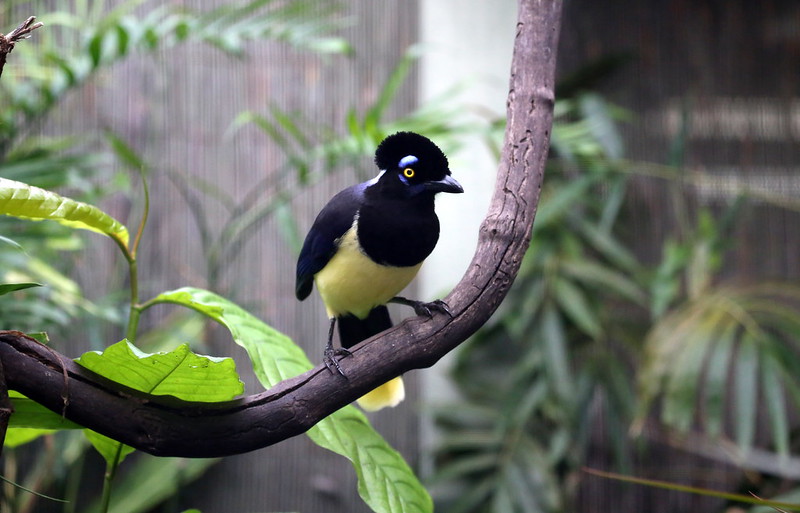 Photo Courtesy of cuatrok77 / CC BY-SA 2.0
Photo Courtesy of cuatrok77 / CC BY-SA 2.0
Both sexes look very much alive.
Juvenile birds have a duller nape, with their facial pattern appearing only after the first month.

These birds are found in central-southern South America in the southwestern countries of Brazil, Bolivia, Paraguay, Uruguay, and northeastern Argentina.
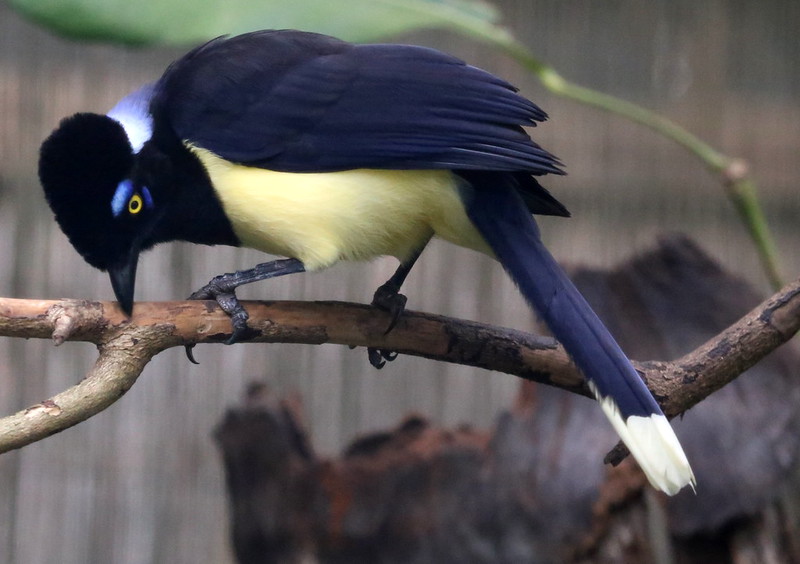 Photo Courtesy of cuatrok77 / CC BY-SA 2.0
Photo Courtesy of cuatrok77 / CC BY-SA 2.0
The Plush-crested Jay frequents forest and wooded areas, from typical lowland evergreen forests and tropical deciduous forests to temperate rainforests. It is usually seen up to 1500 meters of elevation, but it may occur at 2800 meters in Bolivia.

The Plush-crested Jay feeds mainly on small invertebrates, for the most part being insects. They will however take fruits from several plant species such as Ficus and Phylodendrum, Casearia and Syagros, and also Psidium and Rapanea. Nestlings and eggs of other bird species, frogs, seeds, and maize are also taken when given the chance.
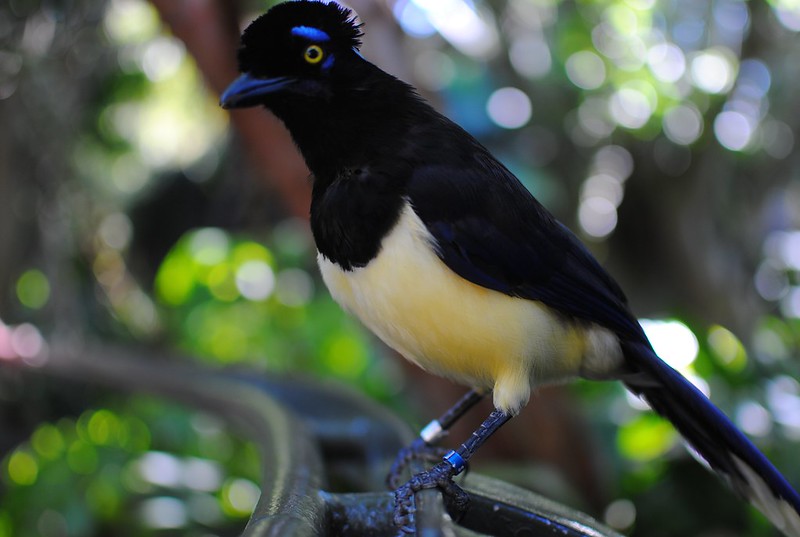 Photo Courtesy of Osbornb / CC BY 2.0
Photo Courtesy of Osbornb / CC BY 2.0
These birds are sometimes cooperative when it comes to breeding, having two to three young from the previous season helping out with nesting duties and defending the territory. A cup-shaped nest made from twigs, lined with smaller twigs and plant fibers is built about 4 to 7 meters above ground in thick foliage. 2 to 4 speckled eggs are laid within and incubated for 18-20 days. She is fed by her mate and the chicks fledge 22-24 days after hatching.
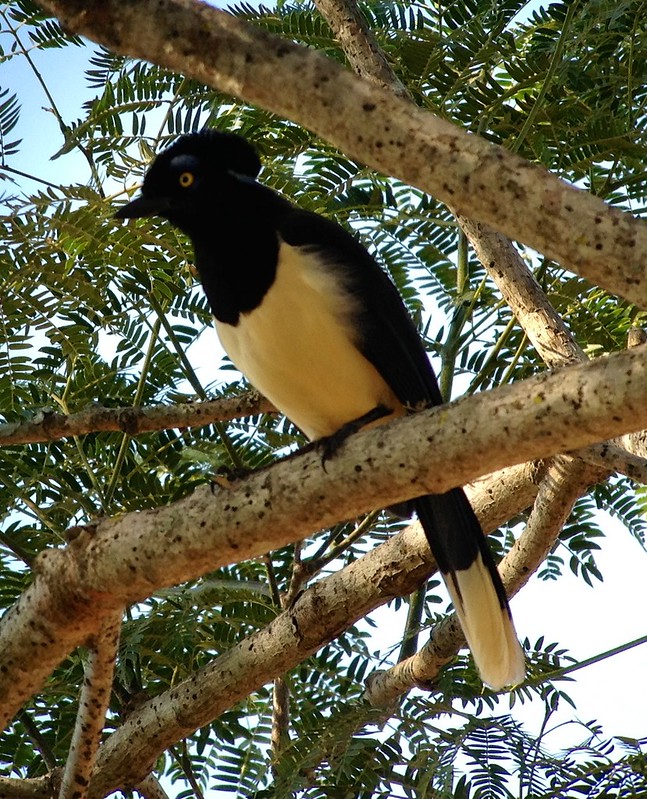
The Plush-crested Jay is threatened by deforestation, but fortunately, this species is able to live in isolated forest patches of 10-20 ha, if larger forests are not too far.
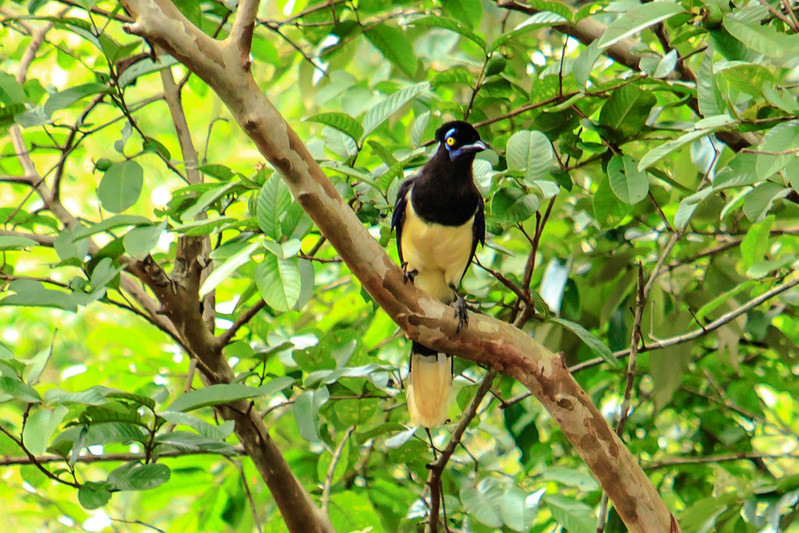 Photo Courtesy of Murray Foubister / CC BY-SA 2.0
Photo Courtesy of Murray Foubister / CC BY-SA 2.0
You can watch and listen to this bird right here in the video below:
https://youtube.com/watch?v=bCsHtePN1H8%3Ffeature%3Doembed
